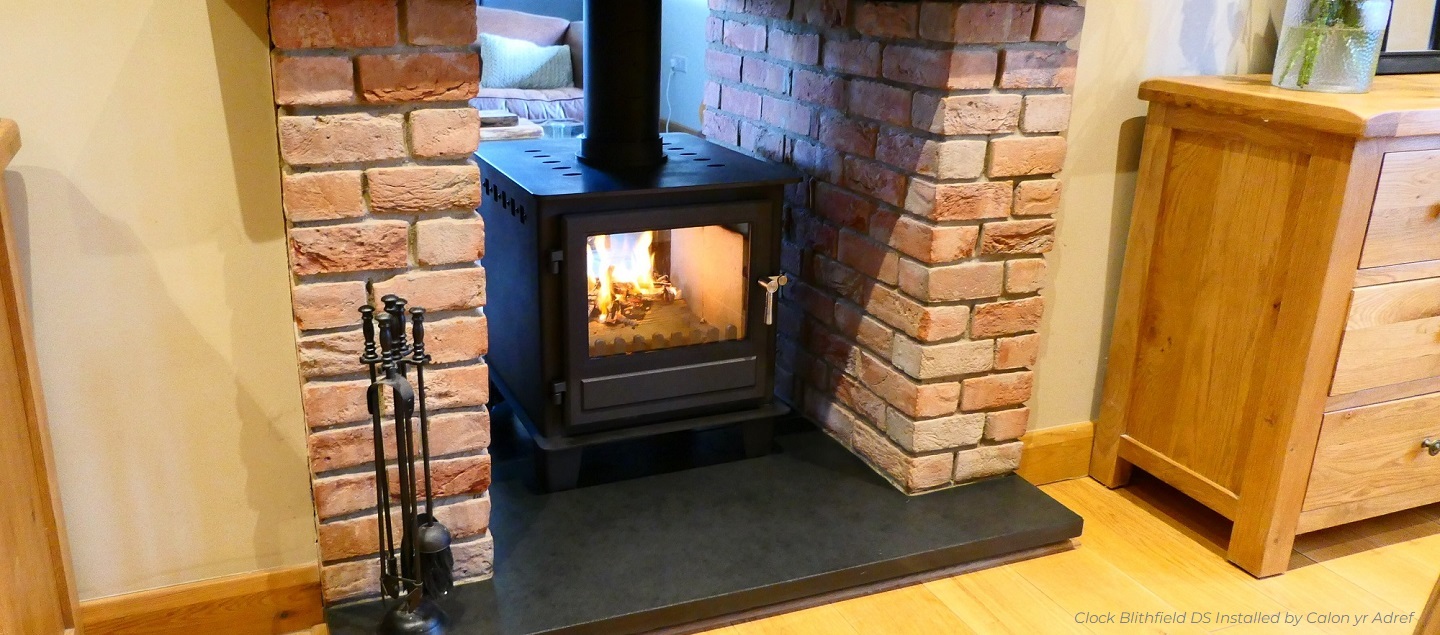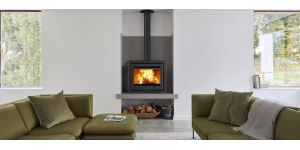Choosing the right stove with a suitable KW heat output
One of the most frequent and frustrating issues when it comes to stove sizes is when the specified stove is simply too large for the setting. This is an all too frequent problem whereby the output of the stove is simply too high for the space its fitted in - which not only causes inconvenience and a sense of apathy for the end user, but also introduces some very real danger. What tends to happen when a stove is over-specified in terms of heat output, is the stove gets under-fired and starved of airflow by the user closing down the air controls as much as possible, in an effort to limit the heat output. The problem with this is it tends to result in incomplete combustion causing built up in the chimney system, which introduces the risk of chimney fires, and failed discharge of the combustion gases such as Carbon Monoxide, resulting in these poisonous gases creeping back down the chimney system and seeping out into the room and creating a very real and very dangerous risk of Carbon Monoxide poisoning.
Equally frustrating is an under-sized stove, whereby all factors of the property were not properly considered and as such, the heat output to the room leaves much to be desired; not only is this frustrating for the end user but ultimately results in misuse of the stove; over-firing and over-loading of fuel, resulting in excessive wear and damage to important rope seals, fire bricks, and ultimately the stove body itself. Over-firing can cause cracks and splits which aren't always clearly visible without a thorough stove safety inspection, and can be a easy route for smoke and poisonous gases such as Carbon Monoxide to escape from the stove into the room, instead of up the chimney. These cracks, depending on their location, will also affect your ability to control the air flow to the fire bed, resulting in further compounding damage to the stove.
From this, you can easily see that there's a lot more importance to choosing the right size of stove than just preference or style. It is genuinely very important that the stove is suitably sized for the intended space it is to be fitted and used in.
How to calculate appropriate stove KW heat output
Measure the room – you will need to measure the length and width of the room, as well as the height of the room from the floor to the ceiling. For example, the room may be 8 metres long, 5 metres wide, with 2.5 metre high ceilings.
Calculate the room volume – now you have your room measurements, you can multiply them together to get the cubic volume of the room. So if your room measured 8m x 5m and has 2.5m high ceilings, you would multiply 8 by 5, then multiply again by 2.5. (8 x 5 x 2.5 = 100m3)
Factor in insulation levels & other impacting features – this part of the calculation requires an understanding of the property and consideration of features within the space to be heated such as large windows, skylights, any stair cases in the room, draughty doors etc.
For a well insulated modern newbuild property with no notable features that would likely cause additional heat loss, the rule of thumb is to divide the cubic volume of the room by 14. So in our example where we have a 100m3 space, we would need to divide 100 by 14 (100 ÷ 14 = 7.14) – which as you can see, in this example puts us roughly in the ball-park of a 7 – 7.5kw stove.
For a non-newbuild but still basically insulated property, you'd typically divide the volume figure by 12, (100 ÷ 12 = 8.33), putting us closer to an 8.5kw stove.
For an older draughty property with limited insulation, the figure you need to divide by drops down to 10, (100 ÷ 10 = 10), which would put us with this example as requiring roughly a 10kw stove.
As mentioned, there are other factors to consider, if you have skylights or large windows and doors which cause notable cold spots and draughts, you may want to go slightly higher with the heat output than the figures achieved above; but be careful not to over-reach with this; jumping from a 10 to 11kw stove is a notable 10% increase, so don't be too drastic with your adjustments for these additional impacting features.
These calculations can be a little daunting, but don't worry, we can help with this and would always make calculations as part of our install surveying process.
Contact us to arrange a pre-installation survey.


